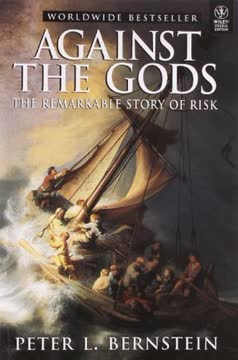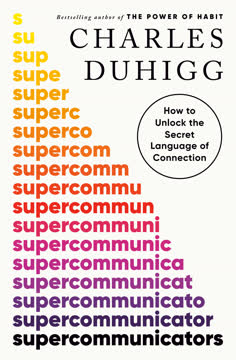Key Takeaways
1. Risk is a product of external threats and internal vulnerabilities
If there are no threats—our vulnerabilities don't matter. If we have no vulnerabilities—threats don't matter.
Risk equation. Risk is not solely determined by external factors, but by the interaction between threats and our own weaknesses. Organizations must focus on strengthening their internal capabilities to mitigate risk effectively.
Risk Immune System. Just as our bodies have immune systems to detect and combat threats, organizations need a Risk Immune System to Detect, Assess, Respond, and Learn from risks. This system comprises ten interconnected Risk Control Factors:
- Communication
- Narrative
- Structure
- Technology
- Diversity
- Bias
- Action
- Timing
- Adaptability
- Leadership
By understanding and strengthening these factors, organizations can build resilience against a wide range of threats.
2. Communication is the lifeblood of an effective Risk Immune System
Communication allows the Risk Immune System to work. Get this right or we fail.
Four communication tests. Effective communication must pass four crucial tests:
- Physical ability to transmit information
- Willingness to share information
- Quality of the message
- Recipient's ability to understand and act on the information
Signal vs. noise. In today's information-rich environment, organizations must distinguish between critical signals and background noise. The 9/11 attacks illustrate how crucial information can be lost amidst a sea of data. To combat this:
- Establish clear communication channels
- Prioritize and filter information effectively
- Ensure key stakeholders receive and understand critical messages
- Regularly assess and improve communication processes
3. Narrative shapes how organizations perceive and respond to risk
When our narrative is misaligned to our purpose, values, or strategy, we invite risk into our organization.
Power of story. Narratives are not just stories we tell; they shape our identity, values, and actions. A compelling narrative can inspire action and unite an organization, while a misaligned narrative can lead to confusion and vulnerability.
Alignment is crucial. Organizations must ensure their narratives align with:
- Core values and purpose
- Strategic objectives
- Operational realities
When misalignment occurs, as in the case of Google's "Don't be evil" motto conflicting with certain business decisions, it can lead to internal strife and external criticism. Regularly reassess and adjust organizational narratives to maintain alignment and effectiveness in risk management.
4. Organizational structure can enable or inhibit risk management
Structure enables or inhibits the effective functioning of any organization's Risk Immune System.
Design for effectiveness. Organizational structure determines how information flows, decisions are made, and risks are managed. Poor structure can create blind spots and slow response times.
Key considerations for effective structural design:
- Clear roles and responsibilities
- Efficient information flow
- Appropriate decision-making authority
- Flexibility to adapt to changing conditions
Avoid buried responsibility. The financial crisis of 2008 demonstrated how burying risk management functions within an organization can lead to catastrophic failures. Ensure risk management roles have:
- Visibility within the organization
- Direct access to key decision-makers
- Authority to influence strategic decisions
Regularly assess and adjust organizational structure to optimize risk management capabilities.
5. Technology transforms risk landscapes but requires human judgment
As technology continues to evolve, so must we. This means cultivating an active awareness of the ways in which technology shapes our processes and culture.
Double-edged sword. Technology can both mitigate and create risks. While it enhances our capabilities, over-reliance on technology can lead to new vulnerabilities.
Balancing technology and human judgment:
- Understand the limitations of technological solutions
- Maintain human oversight of critical systems
- Regularly assess the impact of technology on organizational culture and processes
- Invest in training to ensure effective use of technological tools
Petrov's dilemma. The story of Stanislav Petrov, who prevented a potential nuclear war by questioning automated warning systems, illustrates the crucial role of human judgment in high-stakes situations involving technology.
6. Diversity of thought and perspective strengthens risk assessment
Diversity isn't a nice-to-do, it's a need-to-do. Different perspectives and skills increase our effectiveness. Achieving diversity requires deliberate action.
Beyond demographics. True diversity encompasses not just demographic factors, but also diversity of thought, experience, and expertise.
Benefits of diversity in risk management:
- Broader range of perspectives on potential risks
- Increased creativity in problem-solving
- Reduced likelihood of groupthink
- Enhanced ability to understand and respond to diverse stakeholders
Operationalizing diversity. To truly benefit from diversity, organizations must:
- Actively seek out and include diverse perspectives in decision-making processes
- Create an environment where dissenting views are welcomed and considered
- Regularly assess team composition and adjust as needed
- Provide training to help team members leverage diverse perspectives effectively
7. Biases distort our perception and handling of risk
Biases are the lens through which we see the world. Often rooted in our experiences and self-interests, they are largely unavoidable—but can dangerously distort our perspectives.
Unconscious influences. Biases are often invisible to us, yet they shape our perceptions, decisions, and actions regarding risk.
Common biases affecting risk management:
- Confirmation bias: Seeking information that confirms existing beliefs
- Status quo bias: Preference for the current state of affairs
- Overconfidence bias: Overestimating one's own abilities or judgment
- Availability bias: Overemphasizing easily recalled information
Mitigating bias. While biases cannot be eliminated, their impact can be reduced by:
- Actively seeking out diverse perspectives
- Using structured decision-making processes
- Encouraging devil's advocate positions
- Regularly challenging assumptions and beliefs
- Conducting post-mortems to identify and learn from biased decisions
8. Timely action is crucial, but rushed decisions can backfire
A correct response to a threat can be entirely ineffective if poorly timed. Acting too early can be as wrong as acting too late.
Balancing act. Effective risk management requires finding the right balance between swift action and careful deliberation.
Factors influencing timing:
- Urgency of the threat
- Available information
- Potential consequences of action or inaction
- Organizational readiness to respond
Learning from history. Historical examples, such as the responses to Hurricane Katrina and the Cuban Missile Crisis, illustrate the importance of timely decision-making and action in crisis situations.
To improve timing:
- Develop early warning systems
- Create decision-making frameworks for various scenarios
- Regularly practice crisis response through simulations
- Foster a culture that values both quick action and thoughtful analysis
9. Adaptability is essential for long-term risk management
Every threat is different—so too must be our responses. Constantly changing threats demand continuous adaptation.
Evolve or perish. In a rapidly changing world, organizations that fail to adapt quickly become vulnerable to new and emerging risks.
Key aspects of organizational adaptability:
- Willingness to change established practices
- Ability to quickly implement new strategies
- Continuous learning and improvement
- Flexibility in organizational structure and processes
Fosbury Flop principle. Just as Dick Fosbury revolutionized high jumping with a new technique, organizations must be willing to radically rethink their approaches to risk management when circumstances demand it.
To foster adaptability:
- Encourage experimentation and innovation
- Create feedback loops to quickly identify and respond to changes
- Develop scenario planning capabilities
- Invest in training and development to build adaptive skills
10. Leadership orchestrates all elements of the Risk Immune System
The Risk Immune System is an organic process but it does not function automatically. Leadership is essential to orchestrate the interactions and synergy of the Risk Control Factors.
Conductor's role. Effective leaders must harmonize all elements of the Risk Immune System, ensuring they work together coherently.
Leadership responsibilities in risk management:
- Setting the tone for risk awareness and response
- Aligning organizational narrative with risk management goals
- Ensuring appropriate resource allocation for risk management
- Fostering a culture of open communication about risks
- Making critical decisions in times of crisis
Beyond heroics. Leadership in risk management is not about having all the answers, but about creating an environment where the entire organization can effectively detect, assess, and respond to risks.
To strengthen leadership in risk management:
- Develop a deep understanding of the organization's Risk Immune System
- Regularly assess and adjust the interplay of Risk Control Factors
- Build a team with diverse skills and perspectives
- Practice decision-making in simulated crisis scenarios
- Foster a culture of continuous learning and improvement in risk management
Last updated:
FAQ
What's Risk: A User's Guide about?
- Understanding Risk Management: The book introduces a new framework for managing risk, focusing on controllable factors rather than just probabilities.
- Ten Dimensions of Control: McChrystal and Butrico outline ten dimensions—communication, narrative, structure, technology, diversity, bias, action, timing, adaptability, and leadership—that can be adjusted to manage risk effectively.
- Real-World Examples: It uses historical and contemporary examples, such as military operations and business scenarios, to demonstrate how these dimensions can be applied to anticipate and respond to risks.
Why should I read Risk: A User's Guide?
- Unique Perspective: The book offers a fresh approach to risk management, emphasizing control and adaptability over traditional probability-based methods.
- Actionable Insights: Readers gain practical tools and exercises to enhance their Risk Immune Systems, improving their ability to navigate uncertainty.
- Timely Relevance: With current global challenges, the book provides relevant strategies for managing risks in personal and professional contexts.
What are the key takeaways of Risk: A User's Guide?
- Risk Immune System Concept: The authors propose that everyone has a "Risk Immune System" that can be strengthened by adjusting the ten dimensions of control.
- Focus on Internal Factors: The book emphasizes that the greatest risks often come from within organizations, leading to better decision-making.
- Adaptability is Crucial: The ability to adapt to changing circumstances is essential for effective risk management, with examples illustrating how flexibility can lead to success.
What are the best quotes from Risk: A User's Guide and what do they mean?
- “The greatest risk to us is us.”: Highlights the idea that internal biases and organizational flaws often pose greater threats than external factors.
- “We may not be able to see the future, but we can improve our resistance and build a strong defense against what we know—and what we don’t.”: Reflects the book's core message that proactive measures can enhance resilience.
- “Diversity isn’t a nice-to-do, it’s a need-to-do.”: Emphasizes the importance of diverse perspectives in decision-making processes to mitigate biases.
How does Risk: A User's Guide define a "Risk Immune System"?
- Holistic Framework: The Risk Immune System is a metaphor for how individuals and organizations can detect, assess, and respond to risks effectively.
- Ten Dimensions of Control: It operates through the ten dimensions of control, which can be adjusted to strengthen the system and improve risk management.
- Proactive Management: By maintaining a healthy Risk Immune System, organizations can better anticipate and mitigate risks, enhancing their overall resilience.
What role does communication play in risk management according to Risk: A User's Guide?
- Lifeblood of the System: Communication is essential for effective risk management; without it, organizations struggle to respond to threats.
- Four Key Tests: Effective communication must transmit information, be willing to share it, ensure message quality, and be understood by recipients.
- Interconnectedness: Communication influences and is influenced by other dimensions of control, such as narrative, structure, and leadership.
How does Risk: A User's Guide address the concept of adaptability?
- Willingness and Ability: Adaptability is defined as both the willingness and ability to change in response to new information or circumstances.
- Examples of Success: The book uses examples like Dick Fosbury's high-jump technique to illustrate how adaptability can lead to success.
- Organizational Culture: Organizations must foster a culture that encourages adaptability, allowing teams to pivot and respond to emerging risks effectively.
What specific methods does McChrystal recommend for managing risk?
- Risk Alignment Checks: Assess how different parts of an organization view risks to ensure a coordinated response and identify disconnects.
- After-Action Reviews: Conduct post-event analyses to learn from experiences and improve future responses.
- Red Team Exercises: Involve external parties to challenge plans and identify vulnerabilities, providing invaluable external perspectives.
How can organizations improve their risk management practices based on insights from Risk: A User's Guide?
- Implement Fusion Cells: Create fusion cells that bring together diverse perspectives and expertise to enhance risk identification and response.
- Conduct Assumptions Checks: Regularly review and challenge underlying assumptions to avoid biases and improve decision-making.
- Foster a Culture of Adaptability: Encourage a mindset that embraces change and innovation to remain agile and responsive to evolving risks.
What role does leadership play in risk management according to McChrystal?
- Facilitating Adaptability: Leaders create a culture that embraces change and encourages adaptability.
- Communication and Clarity: Ensure effective communication flows throughout the organization, setting clear expectations.
- Accountability and Responsibility: Assign clear responsibilities for risk management tasks to avoid confusion and ensure accountability.
What are some common biases that affect decision-making as discussed in Risk: A User's Guide?
- Confirmation Bias: Leads individuals to favor information that supports their existing beliefs, potentially overlooking critical data.
- Groupthink: Tendency for teams to conform to a consensus view, stifling dissenting opinions and limiting alternative solutions.
- Ingroup Bias: Causes individuals to favor those within their own group, leading to a lack of diversity in perspectives.
How does McChrystal suggest organizations learn from past experiences?
- Conduct After-Action Reviews: Analyze past events to identify lessons learned and improve future responses.
- Implement Pre-Mortems: Anticipate potential failures before they occur to mitigate risks effectively.
- Encourage Open Dialogue: Foster a culture of open communication to share insights and concerns, gaining valuable perspectives.
Review Summary
Risk: A User's Guide received mixed reviews. Some praised its practical framework for risk management and engaging historical examples, while others found it lacking in depth and originality. Critics noted the book's reliance on obvious concepts and questionable COVID-19 examples. Supporters appreciated McChrystal's emphasis on proactive risk mitigation and organizational resilience. Overall, readers found the book accessible but divided on its value, with some preferring McChrystal's earlier works.
Similar Books










Download PDF
Download EPUB
.epub digital book format is ideal for reading ebooks on phones, tablets, and e-readers.





